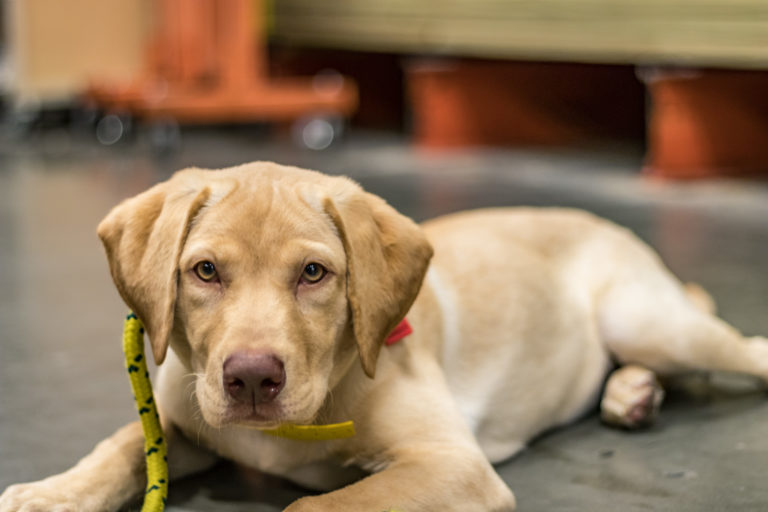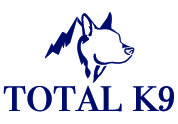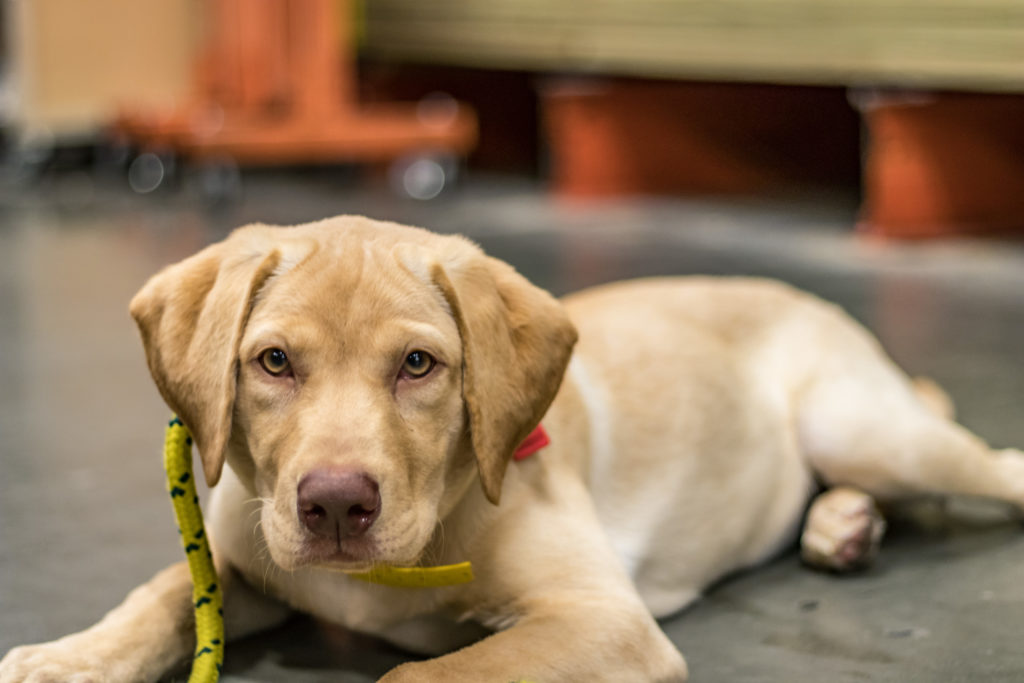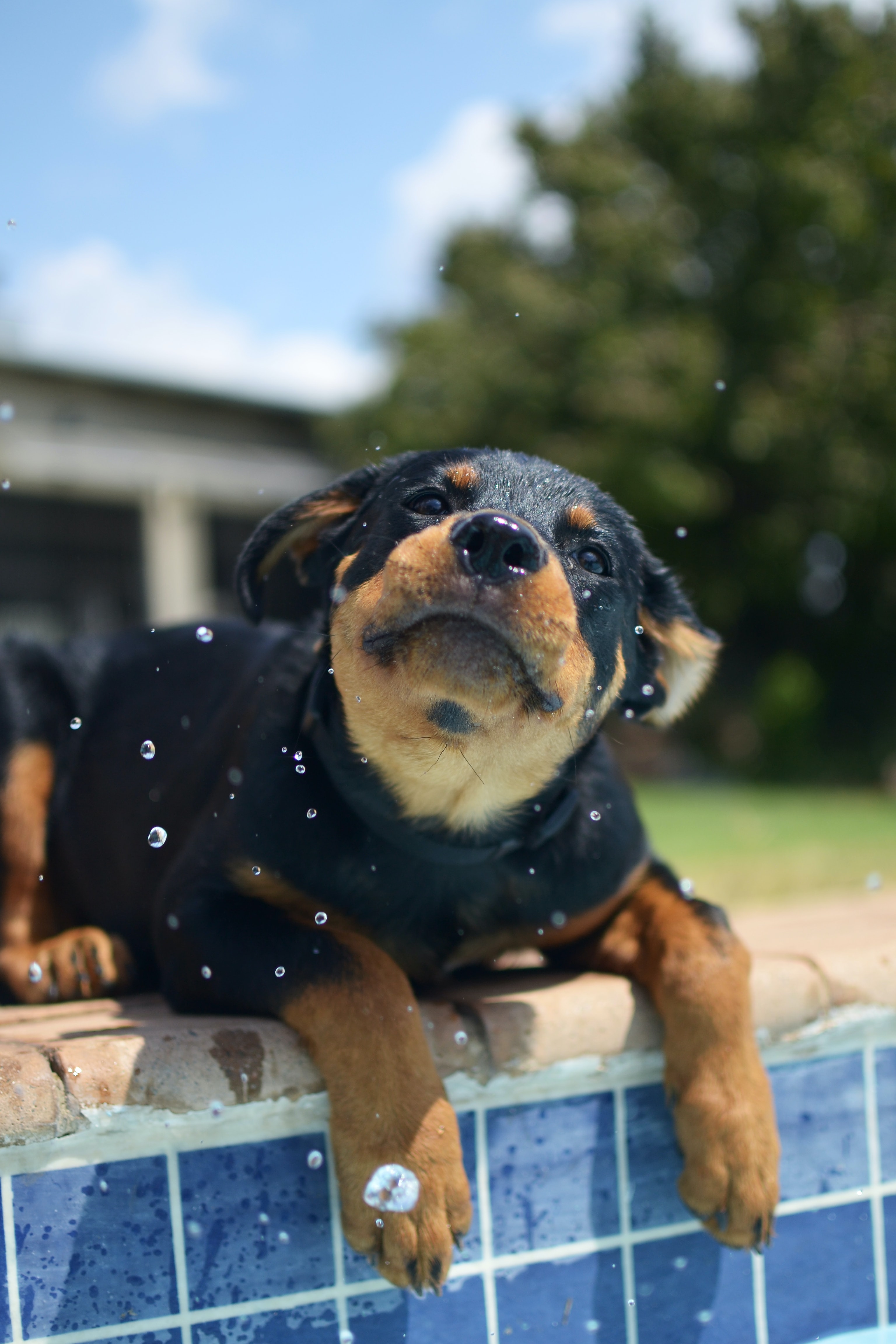By Brittany Turner
Do You Make Any Sense to Your Dog?
-
By Total K9
- July 7, 2020

Think about how dogs communicate to each other and then think about how you communicate to your dog. Do they look the same? If they don’t, then you probably don’t make any sense to your dog.
Dog’s communicate through physical contact, body language/ visual cues and spatial pressure, all of which are non verbal. Yet, here we are having full on conversations with our dogs and expecting them to understand us- even when you have spent zero time actually showing them what specific words mean; sit, down, stay, no, crate, ect.
Dog’s Don’t Come Pre-programmed to Understand Your Language.
Stop talking to your dog in SENTENCES- especially when you are expecting some kind of obedience/ response from them.
“ Sweet Fito, will you be a good boy and sit for Mommy?” VS “Fito, Sit”
So how can you train your dog if you shouldn’t talk to them?
Visual Cues- Create physical gestures/cues for commands before adding a word to it.
- Use food to lure your dog into position such as sit, down, heel, place, in between your legs, ect. The lure/ motion you use can eventually turn into a physical cue for that specific command. For example: lure food up and over your dogs head to create the sit position. This will eventually translate into it a physical cue of raising your hand upwards to mean” sit” for your dog.
Physical- Leash Communication
- Leashes should be used to communicate to your dog- not just to keep them close to you. Every dog owner has this tool, yet only a fraction of owners actually teach their dogs how to properly respond and “listen” to the leash. I use leash tension to move my dog in a specific direction, whether it be towards me, backwards, or into a sit or down.
Clicker Training
This tool can be used to mark your dog’s behavior and cue a reward. With the help of classical conditioning this specific noise will indicate to your dog that they have earned a reward due to the behavior they were doing at the time you clicked/ marked. For example- you use a food lure to move their body into a sit, once they are in the sit you click and give them a reward.
I’m not saying you should never use verbal communication- I’m saying you need to teach them verbal cues through other forms of communication that come more naturally to your dog.
By Brittany Turner
Do You Make Any Sense to Your Dog?
-
By
Total K9 -
July 7, 2020

Think about how dogs communicate to each other and then think about how you communicate to your dog. Do they look the same? If they don’t, then you probably don’t make any sense to your dog.
Dog’s communicate through physical contact, body language/ visual cues and spatial pressure, all of which are non verbal. Yet, here we are having full on conversations with our dogs and expecting them to understand us- even when you have spent zero time actually showing them what specific words mean; sit, down, stay, no, crate, ect.
Dog’s Don’t Come Pre-programmed to Understand Your Language.
Stop talking to your dog in SENTENCES- especially when you are expecting some kind of obedience/ response from them.
“ Sweet Fito, will you be a good boy and sit for Mommy?” VS “Fito, Sit”
So how can you train your dog if you shouldn’t talk to them?
Visual Cues- Create physical gestures/cues for commands before adding a word to it.
- Use food to lure your dog into position such as sit, down, heel, place, in between your legs, ect. The lure/ motion you use can eventually turn into a physical cue for that specific command. For example: lure food up and over your dogs head to create the sit position. This will eventually translate into it a physical cue of raising your hand upwards to mean” sit” for your dog.
Physical- Leash Communication
- Leashes should be used to communicate to your dog- not just to keep them close to you. Every dog owner has this tool, yet only a fraction of owners actually teach their dogs how to properly respond and “listen” to the leash. I use leash tension to move my dog in a specific direction, whether it be towards me, backwards, or into a sit or down.
Clicker Training
-
This tool can be used to mark your dog’s behavior and cue a reward. With the help of classical conditioning this specific noise will indicate to your dog that they have earned a reward due to the behavior they were doing at the time you clicked/ marked. For example- you use a food lure to move their body into a sit, once they are in the sit you click and give them a reward.
I’m not saying you should never use verbal communication- I’m saying you need to teach them verbal cues through other forms of communication that come more naturally to your dog.
Share on facebook
Share on google
Google+
Share on twitter
Share on linkedin
Share on pinterest

Brittany Turner
Owner and Trainer of Total-K. Professional Dog Trainer and Behavioralist. Focused on educating and bringing awareness to humans on how dogs operate.
Explore more about dogs

Brittany Turner
Owner and Trainer of Total-K. Professional Dog Trainer and Behavioralist. Focused on educating and bringing awareness to humans on how dogs operate.




